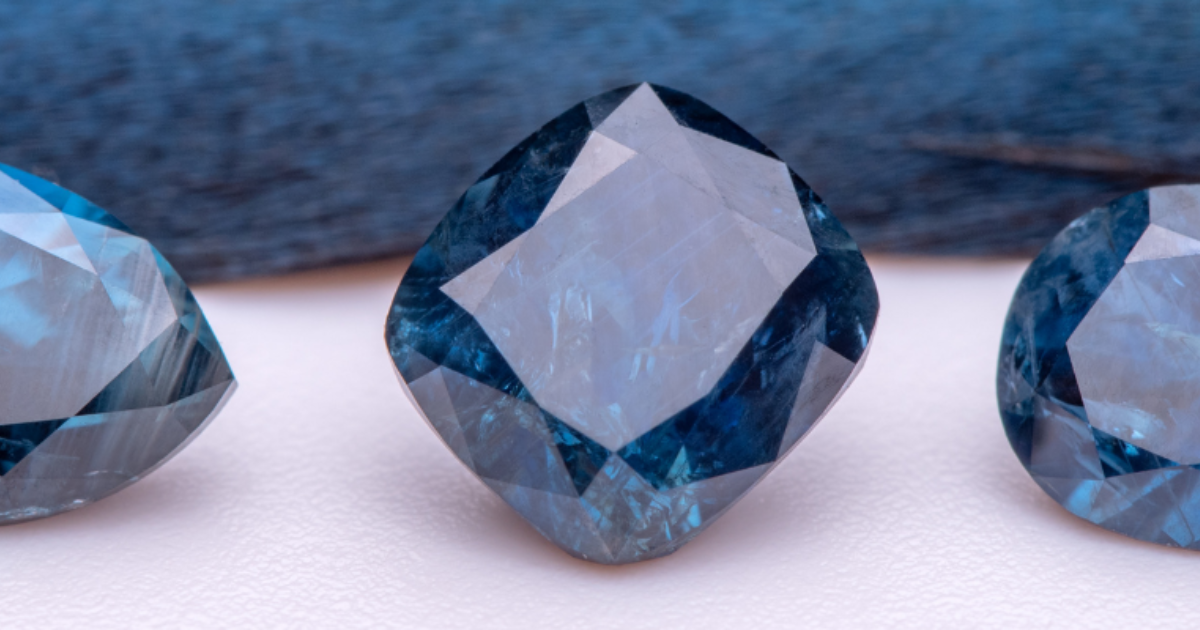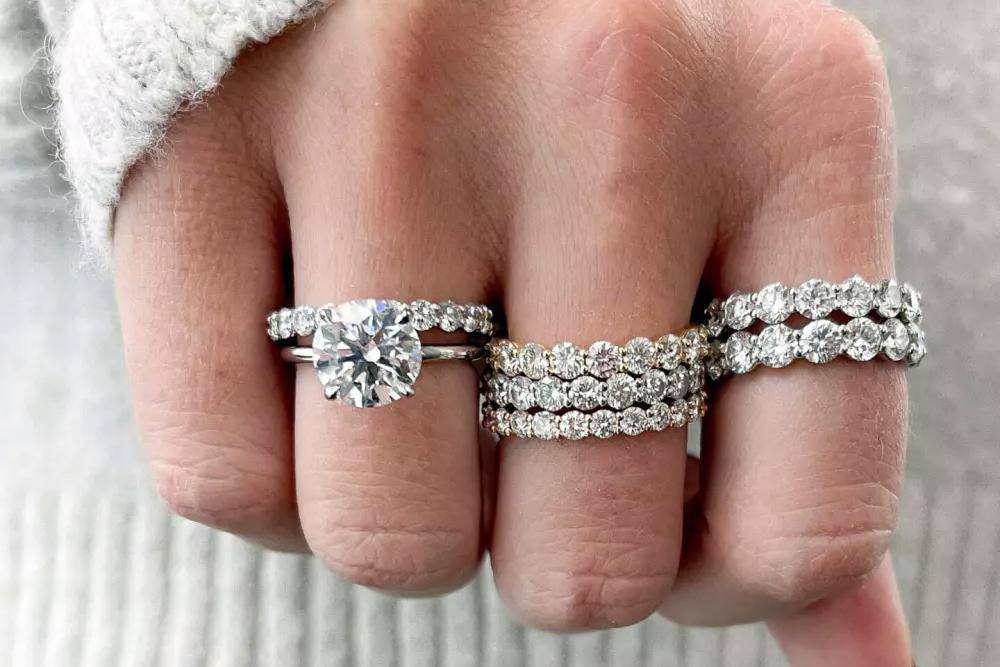Gemstones hold a timeless allure, captivating us with their beauty and mystiqueAmong the myriad gemstones adorning the world, Saphir and Diamant stand out as iconic symbols of elegance and luxuryIn this comprehensive comparison, we delve into the intricacies of these two precious gems, exploring their composition, properties, cultural significance, and more.
Introduction
What is Saphir?
Saphir, also known as sapphire, derives its name from the Greek word “sappheiros,” meaning blue stoneRenowned for its mesmerizing blue hue, Saphir belongs to the corundum mineral family, second only to Diamant in hardness.
What is Diamant?
Diamant, commonly referred to as diamond, holds a special place in the realm of gemstonesFormed deep within the Earth’s mantle under extreme pressure and temperature conditions, Diamant emerges as a symbol of everlasting love and unparalleled brilliance.
Purpose of Comparison
The comparison between saphir vs diamant aims to elucidate their distinct characteristics, enabling consumers to make informed choices based on their preferences and requirements.
Composition and Properties
Saphir Composition
Saphir comprises aluminum oxide with trace elements such as iron, titanium, and chromium, which impart its distinctive colors ranging from blue to yellow, pink, and beyondIts crystalline structure contributes to its exceptional durability and luster.
Diamant Composition
Diamant, composed of pure carbon atoms arranged in a crystal lattice, undergoes immense pressure and heat deep within the Earth, resulting in its renowned brilliance and hardnessIts exceptional optical properties render it a coveted gemstone for jewelry and industrial applications.
Physical Properties Comparison
While both Saphir and Diamant exhibit remarkable hardness, with Diamant scoring a perfect 10 on the Mohs scale and Saphir trailing closely behind at 9, their optical properties differ significantlyDiamant’s unparalleled dispersion and refractive index contribute to its mesmerizing sparkle, whereas Saphir’s brilliance emanates from its internal crystal lattice.
Color and Clarity
Saphir Color and Clarity
Saphir’s color spectrum encompasses various shades, with the most prized being the intense blue hues of Kashmir SaphirClarity-wise, Saphir may contain inclusions known as “silk,” which enhance its visual appeal and authenticity.
Diamant Color and Clarity
Diamant’s colorless variety reigns supreme in the realm of fine jewelry, symbolizing purity and eternal loveHowever, colored Diamants, known as fancy Diamants, exhibit a spectrum of hues, with pink, blue, and yellow being the most sought afterClarity is paramount in evaluating labor diamante deutschland, with the absence of inclusions signifying its rarity and value.
Comparing Color and Clarity
While both Saphir and Diamant boast a kaleidoscope of colors, Diamant’s clarity standards are generally more stringent, with flawless specimens commanding premium pricesSaphir, on the other hand, embraces its natural inclusions as part of its charm, offering a diverse range of aesthetic possibilities.
Durability and Hardness
Saphir Durability and Hardness
Saphir’s impressive hardness makes it suitable for various jewelry applications, from engagement rings to pendants and earringsIts resilience to scratches and abrasions ensures enduring beauty, making it a favored choice among jewelry enthusiasts.
Diamant Durability and Hardness
Diamant’s unparalleled hardness not only makes it the hardest natural substance on Earth but also renders it highly resistant to scratches and wearIts durability and longevity make it an ideal choice for heirloom jewelry, symbolizing eternal love and commitment.
Relative Durability Comparison
While both Saphir and Diamant boast exceptional durability, Diamant’s superior hardness grants it an edge in withstanding daily wear and tearHowever, with proper care and maintenance, both gemstones can retain their beauty and brilliance for generations to come.
Cost and Availability
Saphir Cost and Availability
Saphir’s availability varies depending on its color and clarity, with rare specimens commanding premium pricesWhile blue Saphirs from Kashmir are among the most coveted, Saphirs from other regions offer more affordable alternatives without compromising on quality.
Diamant Cost and Availability
Diamant’s rarity and demand contribute to its lofty price tags, especially for colorless, flawless specimensHowever, the emergence of lab-grown Diamants has expanded accessibility, offering budget-friendly options without sacrificing quality or brilliance.
Affordability Comparison
In terms of affordability, Saphir generally offers more accessible options for budget-conscious consumers, with a wide range of colors and qualities to choose fromDiamant, while traditionally associated with luxury, now offers more accessible alternatives through lab-grown options, catering to diverse preferences and budgets.
Diamant Uses
Diamant’s unparalleled brilliance and hardness make it the quintessential choice for fine jewelry, particularly engagement rings and anniversary bands symbolizing enduring love and commitmentIts optical properties also render it indispensable in industrial applications, where it serves as a cutting tool in the manufacturing of precision instruments and machinery.
Comparative Applications
While both Saphir and Diamant find common ground in jewelry and industrial applications, their distinct properties dictate their specific usesSaphir’s scratch resistance and heat tolerance make it ideal for watchmaking and optical instruments, while Diamant’s unmatched brilliance and hardness make it the ultimate choice for luxury jewelry and cutting tools.
Cultural Significance
Saphir Symbolism
Throughout history, Saphir has been revered for its association with royalty and wisdomIn ancient civilizations, Saphir adorned the regalia of kings and queens, symbolizing virtue, truth, and protection against harmIts celestial blue hues evoke a sense of tranquility and spiritual enlightenment, making it a cherished gemstone in various cultures.
Diamant Symbolism
Diamant’s symbolism transcends mere adornment, representing enduring love, purity, and invincibilityIts brilliance and rarity symbolize the eternal bond between lovers, making it the ultimate expression of commitment and devotion in engagements and weddings worldwide.
Cultural Comparisons
While both Saphir and Diamant hold cultural significance across different civilizations, their symbolism varies based on cultural beliefs and traditionsSaphir’s association with wisdom and protection resonates in Eastern cultures, while Diamant’s symbolism of love and eternity prevails in Western societies, illustrating the diverse interpretations of these timeless gemstones.
Environmental Impact
Saphir Mining and Environmental Impact
Saphir mining, like other gemstone extraction processes, raises environmental concerns due to habitat disruption and ecosystem degradationHowever, efforts to promote sustainable mining practices and ethical sourcing aim to minimize environmental impact and support local communities in gemstone-producing regions.
Diamant Mining and Environmental Impact
Diamant mining, particularly in alluvial deposits and open-pit mines, poses significant environmental challenges, including deforestation, soil erosion, and water pollutionMoreover, the social and ethical implications of diamond mining, such as labor rights abuses and conflict financing, underscore the importance of responsible sourcing and ethical practices in the diamond industry.
Environmental Considerations
In response to growing environmental concerns, the gemstone industry has embraced initiatives promoting sustainable mining practices, ethical sourcing, and transparency throughout the supply chainFrom fair-trade certifications to eco-friendly mining technologies, stakeholders are working together to minimize the environmental footprint of gemstone extraction and uphold ethical standards in the industry.
Market Trends
Saphir Market Trends
The Saphir market continues to evolve, with growing demand for ethically sourced and responsibly mined gemstonesConsumers are increasingly drawn to unique Saphir varieties, such as Padparadscha Saphir and parti-colored Saphir, reflecting a shift towards individuality and sustainability in jewelry preferences.
Diamant Market Trends
The Diamant market remains resilient, fueled by enduring demand for luxury jewelry and investment-grade diamondsWhile natural Diamants continue to command premium prices, lab-grown Diamants are gaining traction among eco-conscious consumers seeking sustainable alternatives without compromising on quality or brilliance.
Market Comparison
While both Saphir and Diamant cater to distinct market segments, their appeal transcends traditional boundaries, reflecting evolving consumer preferences and valuesFrom rare collector’s gems to everyday adornments, the gemstone market offers a diverse array of options to suit every taste and budget.
Consumer Considerations
Factors Influencing Choice
When choosing between Saphir and Diamant, consumers consider various factors, including budget, aesthetic preferences, and ethical considerationsWhile some prioritize Diamant’s brilliance and durability, others may opt for Saphir’s unique colors and affordability, reflecting individual values and lifestyle choices.
Suitability for Different Purposes
While both Saphir and Diamant excel in jewelry and industrial applications, their suitability varies based on specific requirementsSaphir’s scratch resistance and color variety make it ideal for everyday wear, while Diamant’s hardness and brilliance lend themselves to special occasions and investment pieces meant to last a lifetime.
Consumer Insights
Consumer preferences for Saphir and Diamant reflect broader trends in the luxury goods market, where authenticity, craftsmanship, and sustainability drive purchasing decisionsFrom ethically sourced gemstones to custom-designed jewelry, consumers seek meaningful experiences and lasting value in their purchases, shaping the future of the gemstone industry.
Expert Opinions
Jewelers’ Perspectives
Experienced jewelers emphasize the importance of educating consumers about the unique properties and characteristics of Saphir and DiamantBy providing personalized guidance and expert advice, jewelers empower consumers to make informed choices aligned with their preferences and budget.
Gemologists’ Insights
Gemologists play a crucial role in evaluating and certifying the quality and authenticity of gemstones, including Saphir and DiamantThrough rigorous testing and analysis, gemologists provide valuable insights into the origin, clarity, and value of gemstones, ensuring transparency and trust in the gemstone market.
Expert Comparisons
Expert comparisons between Saphir and Diamant highlight the distinct attributes and allure of each gemstone, catering to diverse tastes and preferencesWhile Diamant remains the undisputed king of gemstones in terms of hardness and brilliance, Saphir’s affordability and versatility offer compelling alternatives for discerning consumers.
Popular Misconceptions
Myths About Saphir
One common misconception about Saphir is that it only exists in shades of blueIn reality, Saphir occurs in a spectrum of colors, including yellow, pink, orange, and green, each with its unique charm and appealAdditionally, the belief that Saphir lacks durability compared to Diamant overlooks its impressive hardness and resilience to everyday wear.
Myths About Diamant
A prevalent myth about Diamant is that bigger is always betterWhile large Diamants certainly command attention, their value depends on various factors, including cut, color, clarity, and carat weightMoreover, the notion that all Diamants are flawless ignores the natural imperfections and inclusions that give each Diamant its unique character and beauty.
Clarifying Misconceptions
By dispelling myths and misconceptions about Saphir and Diamant, consumers gain a deeper appreciation for the intrinsic qualities and beauty of these precious gemstonesThrough education and awareness, stakeholders in the gemstone industry foster a culture of transparency and integrity, empowering consumers to make informed choices aligned with their values and preferences.





